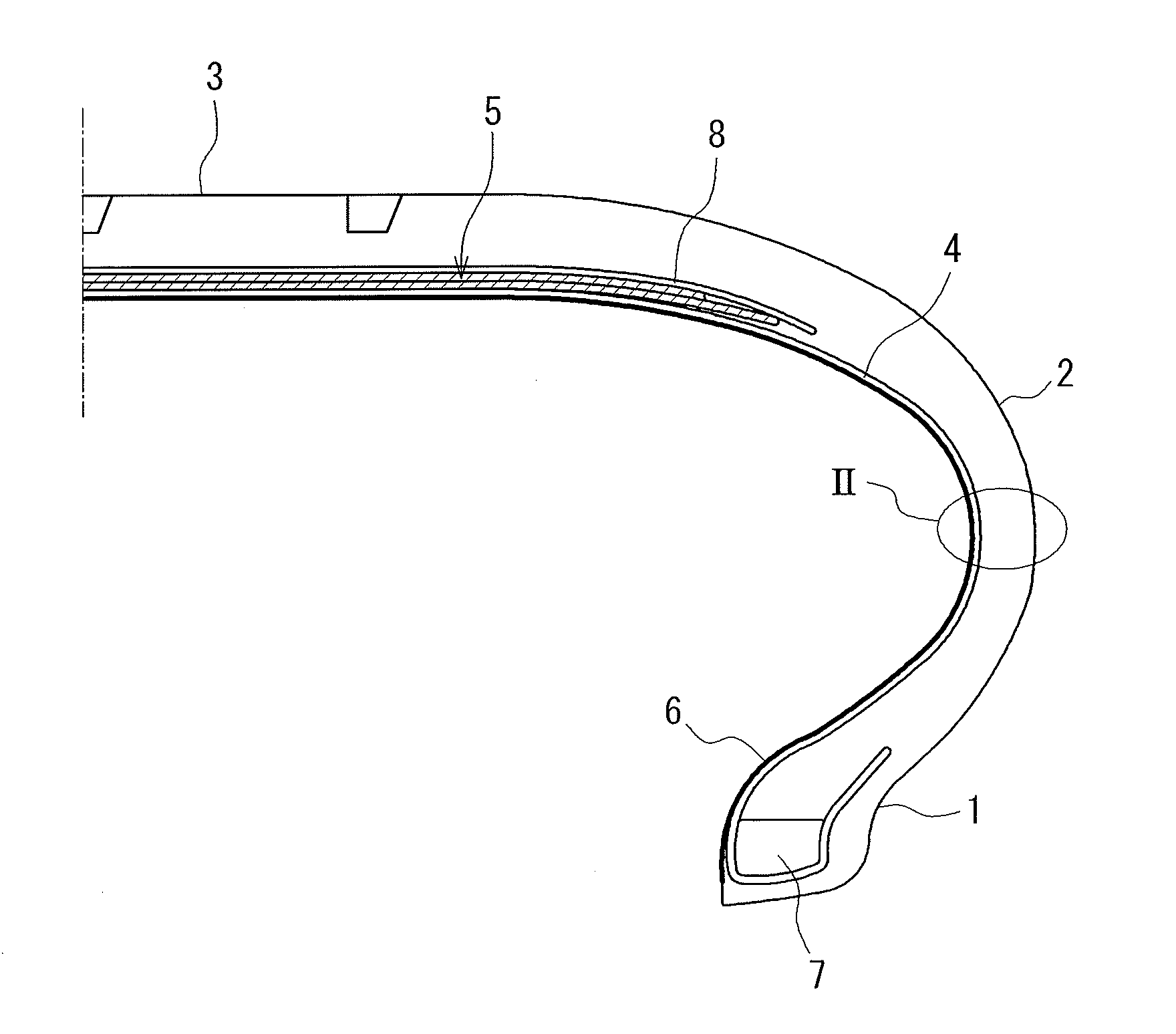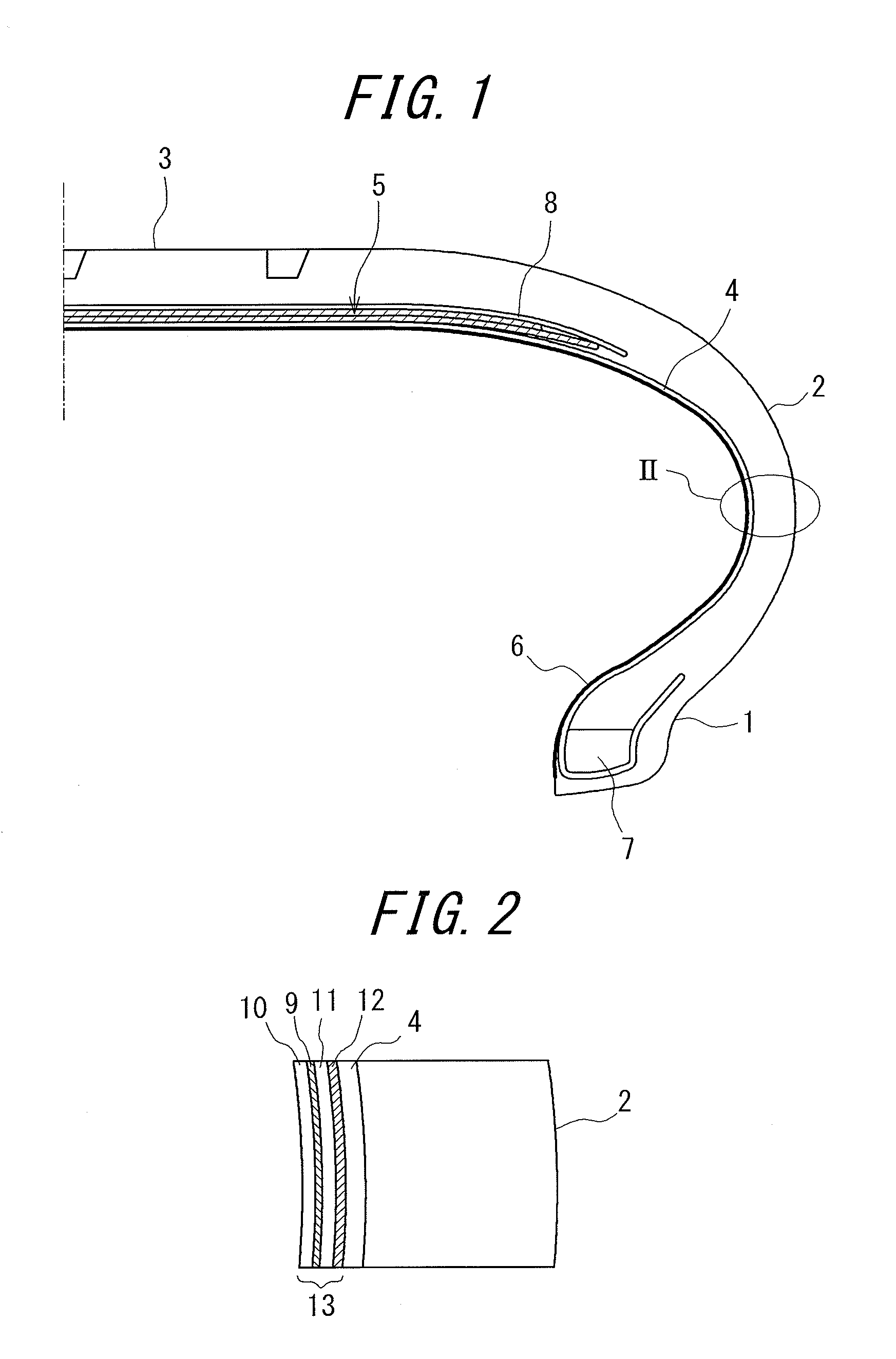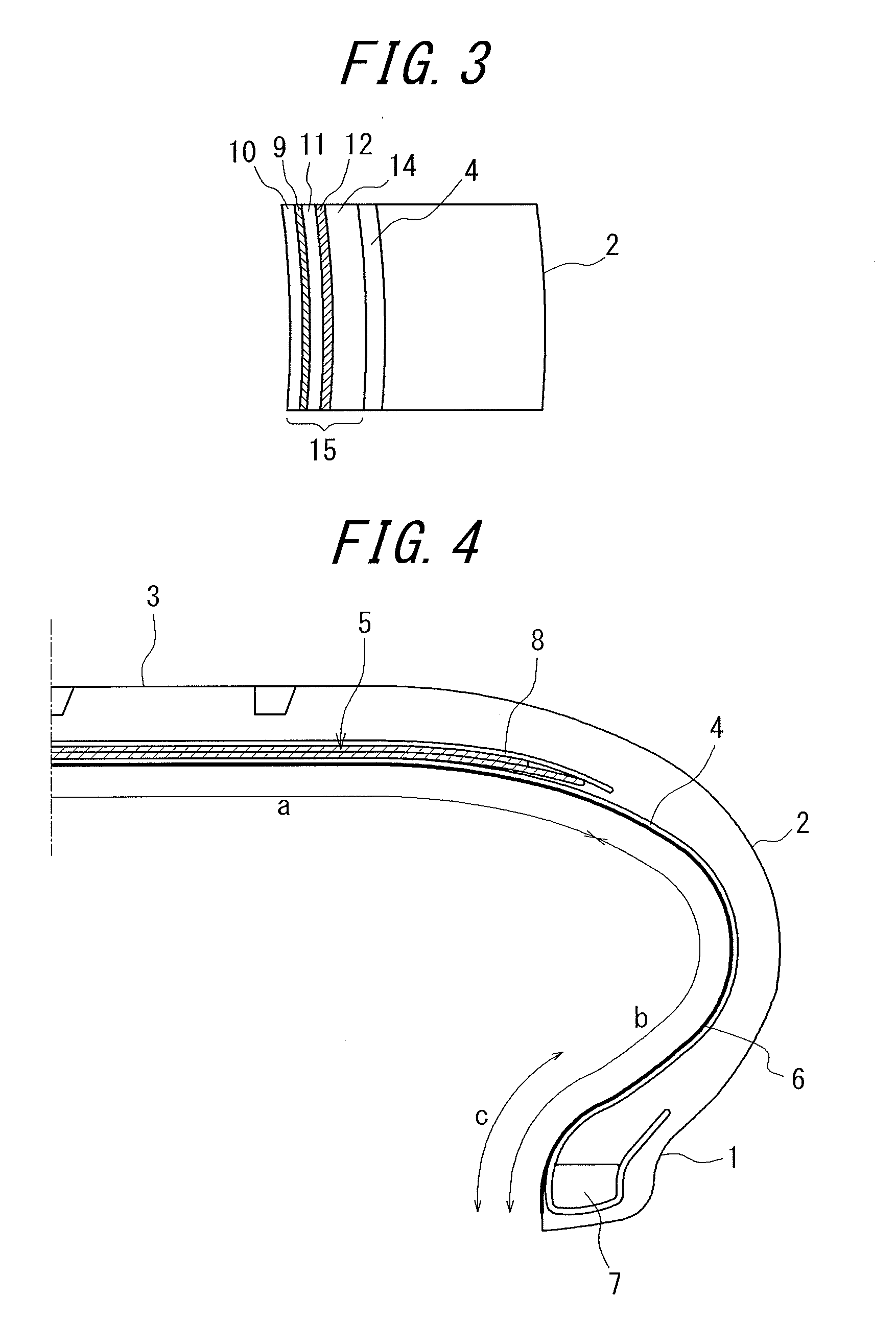Film, inner liner for tire, and tire using the same
a technology of inner liner and tire, which is applied in the direction of synthetic resin layered products, tyre parts, vehicle components, etc., can solve the problems of insufficient internal pressure retention, difficult to reduce the weight of tires to improve fuel consumption of automobiles, agricultural vehicles, etc., and achieve excellent gas barrier properties and bending resistance, the effect of improving the internal pressure retention of tires
- Summary
- Abstract
- Description
- Claims
- Application Information
AI Technical Summary
Benefits of technology
Problems solved by technology
Method used
Image
Examples
synthesis example 1
Of modified ethylene-vinyl alcohol copolymer
[0089]2 parts by mass of ethylene-vinyl alcohol copolymer having ethylene content: 44% and saponification value: 99.9% (MFR: 5.5 g / 10 minutes at 190° C. under the load of 2160 g) and 8 parts by mass of N-methyl-2-pyrrolidone are charged in a pressure reaction tank, and the mixture is heated and stirred at 120° C. for 2 hours, so that the ethylene-vinyl alcohol copolymer is completely dissolved. 0.4 parts by mass of epoxypropane as the epoxy compound (E) is then added to the mixture and the resulting reaction mixture is heated at 160° C. for 4 hours. After the heating is completed, the mixture is put into 100 parts by mass of distilled water for precipitation. The resulting precipitates is thoroughly washed with a large amount of distilled water to wash off N-methyl-2-pyrrolidone and unreacted epoxypropane, whereby modified ethylene-vinyl alcohol copolymer is obtained. The modified ethylene-vinyl alcohol copolymer thus obtained is pulverize...
synthesis example 2
Of Modified Ethylene-Vinyl Alcohol Copolymer
[0090]Screw structures, vents and pressure (hydroforming) inputs are arranged as shown in FIG. 5 by using “TEM-35BS” extruder (37 mmφ, L / D=52.5, manufactured by Toshiba Machine Co., Ltd.). The extruder is operated at the screw rotation number 400 rpm in a state where barrel C1 is water-cooled and barrels C2-C3 and barrels C4-C15 are heated at 200° C. and 240° C., respectively. EVOH is fed from a resin feed inlet of C1 at a rate of 15 kg / hr. After the fed EVOH is melted, water and oxygen are removed from Vent 1 and glycidol is fed from a hydroforming inlet of C9 at a rate of 2.5 kg / hr (the feeding pressure: 6 MPa), whereby glycidol-modified EVOH is obtained.
synthesis example 3
Of Modified Viscoelastic Substance (Succinic Anhydride-Modified SBR)
[0091]300 g of cyclohexane, 41.25 g of 1,3-butadiene, 8.75 g of styrene, 0.38 mmol of ditetrahydrofurylpropane are charged in a 800 mml pressure glass vessel dried at reflux under nitrogen, and 0.43 mmol of n-butyllithium (BuLi) is added thereto. Polymerization is then carried out at 50° C. for 1.5 hours. Thereafter, 0.43 Mmol of 3-(triethoxysilyl)propyl succnic anhydride as a terminal modifier is added to the reaction mixture and a modification reaction is allowed to proceed for 30 minutes. 0.5 mml of 5 mass % solution of 2,6-di-t-butyl-p-cresol (BHT) in isopropanol is then added to the polymerization system to stop the reaction and the reaction mixture is dried by the conventional method, whereby succinic anhydride-modified SBR is obtained.
PUM
| Property | Measurement | Unit |
|---|---|---|
| Young's modulus | aaaaa | aaaaa |
| particle diameter | aaaaa | aaaaa |
| thickness | aaaaa | aaaaa |
Abstract
Description
Claims
Application Information
 Login to View More
Login to View More - R&D
- Intellectual Property
- Life Sciences
- Materials
- Tech Scout
- Unparalleled Data Quality
- Higher Quality Content
- 60% Fewer Hallucinations
Browse by: Latest US Patents, China's latest patents, Technical Efficacy Thesaurus, Application Domain, Technology Topic, Popular Technical Reports.
© 2025 PatSnap. All rights reserved.Legal|Privacy policy|Modern Slavery Act Transparency Statement|Sitemap|About US| Contact US: help@patsnap.com



